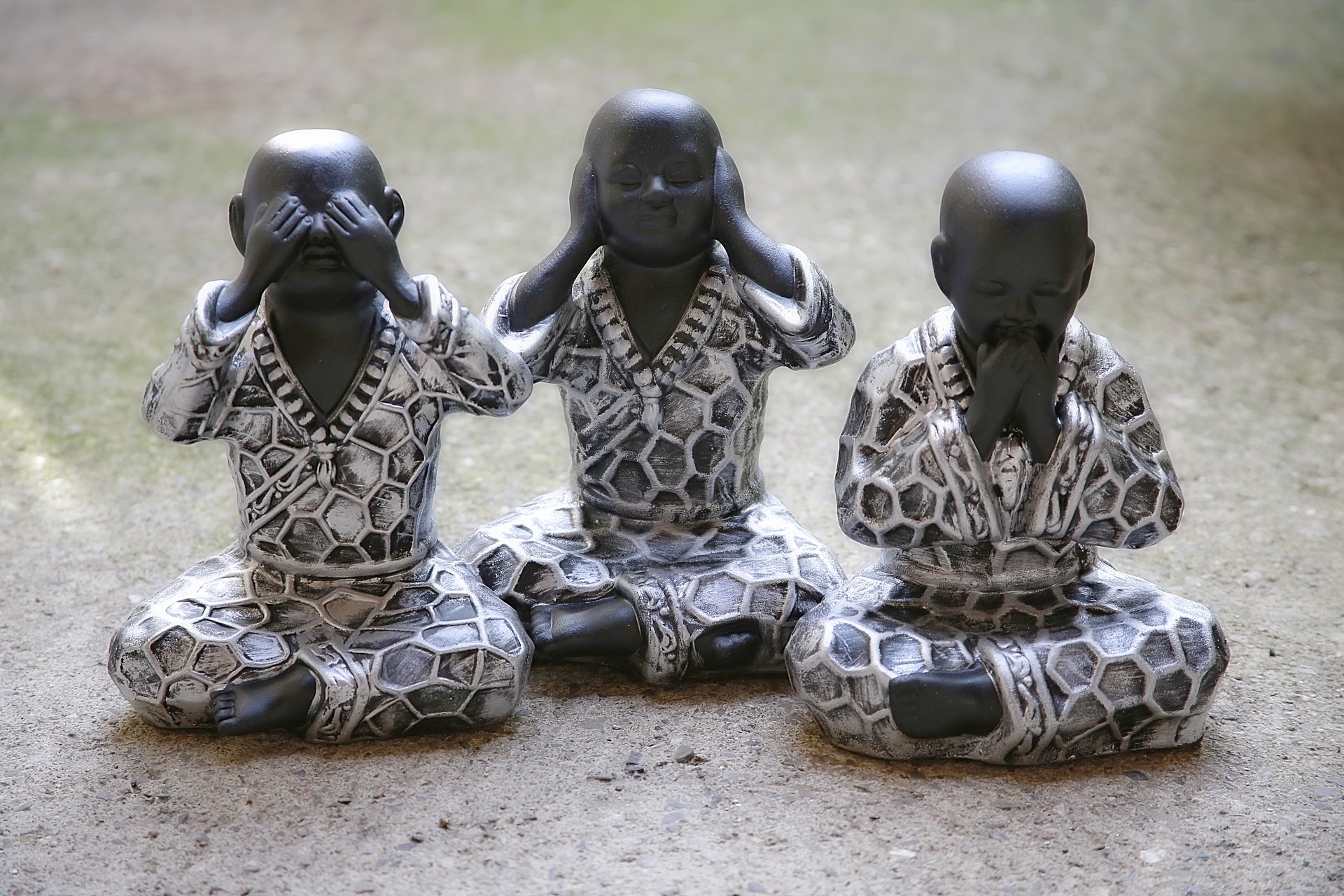Sophrology is a mind-body practice that aims to improve people's well-being and quality of life by working on their consciousness and body. It uses relaxation, visualization and breathing techniques to help individuals reach a state of deep relaxation and manage their stress, anxiety and emotions. Sophrology can be used to treat disorders such as insomnia, phobias and eating disorders, as well as to improve self-confidence and stress management. It can also be used as a complement to other therapies to treat more serious mental and physical disorders.
It helps to achieve harmony between the body and the mind to produce a sense of overall balance.It was conceived by the neuropsychiatrist Alfonso Caycedo and is inspired by ancestral techniques from the East (with meditation, yoga and Zen) and the West (with hypnosis, relaxation and positive suggestion techniques).From all these inspirations, the neuropsychiatrist Alfonso Caycedo created a unique method and codified a set of exercises in a very clear and precise way. He defined dynamic relaxation exercises which are gentle movements associated with breathing and developed sophronizations which are visualizations guided by the voice of the sophrologist.

Thus, sophrology relies exclusively on verbal exchange by using a set of techniques that will act on both the body and the mind. It combines exercises that work on breathing, muscular relaxation and mental image. All these techniques allow to find a state of well-being and to activate all one's potential. Sophrology allows you to acquire a better knowledge of yourself and to face the challenges of everyday life with serenity.
Indeed, sophrology is based on a verbal dialogue between the sophrologist and the patient, as well as on relaxation, visualization and breathing techniques. These techniques aim to help the patient reach a state of deep relaxation and manage stress, anxiety and emotions. Sophrology can be used to treat a variety of disorders, such as insomnia, phobias and eating disorders, as well as to improve self-confidence and stress management. It can also be used as a complement to other therapies to treat more serious mental and physical disorders.
How does a Sophrology session work ?
Sophrology exercises can be practiced in different positions (sitting, standing, lying down) and do not require any specific clothing or equipment. The duration of a session can vary according to the objectives and needs of each person, but it generally lasts about one hour.
In general, a sophrology session begins with a time of exchange with the sophrologist to discuss the expectations and needs of the person. The sophrologist then adapts a customized protocol according to these elements. The session then takes place in several stages, with breathing, relaxation, visualization and meditation exercises.
It is important to feel comfortable and safe during the sophrology session. It is therefore recommended to choose a quiet and comfortable place to practice the exercises. It is also important to feel confident and to respect one's own rhythm so as not to get into difficulty. Do not hesitate to ask the sophrologist for explanations or clarifications if necessary.

A sophrology session generally takes place in the following way :
-
The sophrologist begins by establishing a contact with the patient and puts him/her at ease by explaining the course of the session and by answering his/her questions.
-
The sophrologist guides the patient into a progressive relaxation by asking him/her to concentrate on his/her breathing and to visualize positive images.
-
Once the patient has reached a state of deep relaxation, the sophrologist offers visualization and breathing exercises to help manage stress, anxiety and emotions.
-
At the end of the session, the sophrologist brings the patient back to a state of normal consciousness by asking them to move their fingers and toes and then asking them to stretch.
-
The sophrologist ends the session by discussing with the patient his or her feelings and by giving advice on how to continue practicing sophrology at home.

Sophrology can be practiced in individual or group sessions. In individual sessions, the sophrologist can adapt the protocol according to the needs and objectives of the patient. The sophrologist can also propose specific exercises to treat specific disorders or to help the patient reach specific goals.
In group sessions, the sophrologist guides a group of patients through relaxation, visualization and breathing exercises. These sessions can be beneficial for people who want to practice sophrology in a group setting and share their experience with others. However, they may be less suitable for people with specific disorders or with specific personal goals.
What are the different exercises in Sophrology ?
A Sophrology session can be divided into several stages, which include breathing exercises, mind-body exercises, visualization exercises and meditation exercises.
Breathing exercises are designed to help the patient relax and connect with their body. The sophrologist may also use breathing exercises to help the patient manage emotions and stress.
Body-mind exercises are relaxation exercises that aim to help the patient relax and become aware of their physical sensations. They may also include gentle movements to help the patient connect with their body.
Visualization exercises are designed to help the patient imagine positive scenes and project themselves into situations that are beneficial to them. They can be used to help the patient manage their emotions and achieve their goals.
Finally, meditation exercises are designed to help the patient reach a state of deep awareness and connect with their mind. They can be used to help the patient relax and refocus on themselves.
Each exercise is followed by a time of observation of the body, on the perceptions and sensations felt. The session ends with a sharing or a wording of the phenomena perceived during the session.
To fully benefit from the advantages of sophrology, it is important to settle in a quiet and peaceful place, away from noise and outside distractions. Loose, comfortable clothing is also recommended to allow patients to move freely and relax fully.
In addition, it is advisable to turn off one's cell phone and get out of sight to avoid distractions and focus fully on the session. Finally, it is possible to add background music to the session to promote relaxation and sophronization.
What is sophronization ?
Sophronization is the primordial stage of sophrology which allows the person to enter a state between wakefulness and sleep, it is the sophrolimal level. This state allows the relaxation of the muscles and the letting go of the body.
Sophronization is a technique used in sophrology to help the patient reach a state of modified consciousness, similar to that of meditation. This state is characterized by a deep relaxation of the body and a mental concentration that allows the patient to refocus on himself and to free himself from accumulated tensions and stress.
Sophronization can be used to treat a variety of disorders, such as stress, anxiety, depression, sleep disorders, headaches, musculoskeletal disorders, etc. It can also be used to improve sports performance, emotional management, concentration, creativity, etc.
In sophrology, sophronization is achieved through breathing, visualization and relaxation exercises that relax the body and calm the mind. The sophrologist guides the patient through these exercises to help him or her reach a state of altered consciousness and fully enjoy the benefits of sophrology.

To enter the sophroliminal level, it is important to relax the muscles of the body by breathing deeply and calmly. The eyes can be closed or half-open, according to the preference of the patient. It is also important to relax the mind and to decrease the state of wakefulness and vigilance to promote relaxation and concentration.
It is advisable to lie down during the sophrology session to facilitate the entry into the sophroliminal level. It is also important to settle down in a comfortable place using cushions and a floor mat to avoid muscular tensions and to favour relaxation. Once the session is mastered, it is possible to try other positions, such as sitting on a chair or on the floor.
A relaxing exercise for each objective
In sophrology, there are a certain number of relaxation techniques which allow to answer a specific need. These techniques are static, that is to say that they do not require any movement. We find :
- positive sophro-acceptance which allows to positively anticipate the future by putting forward the success and the confidence, it is what one calls visualization. This technique is very much used by athletes.
- the sensory sophro-substitution which allows to relieve the pain. The pain will be replaced by a sensation of coolness or warmth thanks to the entry in a state of deep relaxation.
- serial sophro-correction which allows to de-dramatize the fear by associating a positive memory in order to fight the source of the anguish. The situation can be an OCD with the repetition of an inappropriate gesture, thoughts or attitudes that one finds absurd.
- the reflex gesture which allows to associate a state with a gesture in order to record the appeasement.
What are the benefits of sophrology ?
Sophrology allows to find a state of well-being and serenity by acting on the body and the spirit. It can help to treat various disorders, such as stress, anxiety, depression, sleep disorders, headaches, musculoskeletal disorders. It can also be used to improve sports performance, emotional management, concentration, creativity, etc.
By entering the sophroliminal level, the patient can benefit from a deep relaxation which allows to relax the muscles, to calm the mind and to refocus his thoughts. This altered state of consciousness can also promote the production of endorphins, which are feel-good hormones, and help to reduce physiological responses to stress.
In addition, sophrology can be used to strengthen the body's ability to heal itself and maintain good health. It can also help to gain self-awareness and develop strategies to face daily challenges with serenity.
Sophrology is a therapeutic approach that aims to improve the quality of life by working on negative emotions and strengthening personal resources. It allows to act on the different aspects of life (physical, emotional, mental and social) to reach a global state of well-being.
Sophrology uses relaxation, visualization and meditation techniques to help people better manage their stress and negative emotions. These techniques help to regain a state of calm and serenity, to improve self-confidence and concentration, and to strengthen the ability to adapt to the difficulties of daily life.
By working on negative emotions, sophrology has benefits on the body and the mind. It helps to relieve back, head, stomach or heart aches linked to stress and negative emotions, and to improve the quality of sleep, nutrition and social relationships. By reinforcing personal resources, it also helps to better manage difficult situations and improve the quality of life.
On sleep

Sophrology can help improve the quality of sleep by learning to manage stress, emotions and negative thoughts that can disrupt sleep. It also helps to develop relaxation techniques to facilitate falling asleep and to promote restful sleep.
On stress

Sophrology can be useful to manage stress by learning to recognize the warning signals and by developing strategies to face them in a positive way. It also helps develop relaxation techniques to reduce the physical and emotional effects of stress. Thanks to sophrology, it is possible to better understand the causes of stress and to adopt more adapted behaviors to manage it.
On the skin

Sophrology can help improve the quality of the skin by acting on stress and negative emotions that can have an impact on our skin. It also allows us to develop relaxation techniques to help our body function better and to strengthen our immune system. By managing stress, sophrology can also help reduce the appearance of pimples, eczema, redness and hives.
On the emotions

In addition to these physical disorders, sophrology can also treat psychological disorders such as anxiety, depression, sleep disorders, phobias, ... By acting on negative emotions, sophrology allows to find a state of well-being and serenity.







